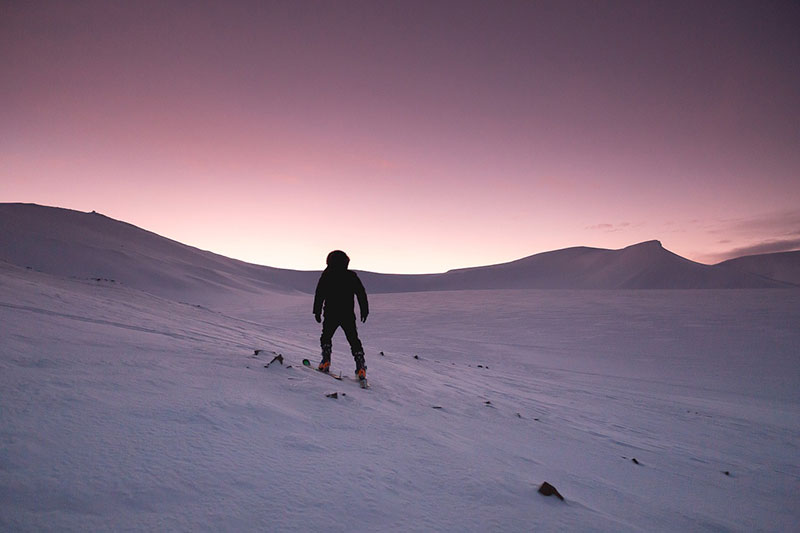We all hope when venturing into the wild that nothing serious will happen. But unless you’re The Terminator or one of the X-Men, it’s best to have some knowledge of first aid.
Make safe choices. Bleeding to death generally happens much faster than running out of food or supplies. If you’re considering leaning out over that nasty drop to get those tasty looking berries, reconsider your choice. Also, what have we told you about eating berries?
Nothing can replace or substitute for an in-depth first aid course. Use this article as an introduction. If you frequently find yourself or others risking injury in the wild, go learn on a classroom dummy before you have to save the real-life dummy that just reached their hand into the fire. And, for the love of god, always pack a proper first aid kit.
Prepare Yourself
Simple preparation is more important than advanced knowledge. Don’t enter an unpopulated area without a first aid kit. At a bare minimum, your kit should include clean gauze, bandages and tape, antiseptic wipes, and antibiotic ointments. It’s probably a good idea to flesh that out further with pain medication, scissors, and tweezers. If you feel like putting virtually no effort whatsoever into a first aid kit, then just order a pre-made one and bring it with you. Even the lazy can be ready for anything.
Patch Up a Wound
Whether major or minor, any break in the skin should be treated to avoid bleeding and prevent infection.
Minor wounds should be rinsed with clean water or swabbed with sterilizing wipes. Apply antibiotic ointment if available. As a backup, clean the wound with tincture of iodine, but be aware that it may cause tissue damage. A poultice of yarrow leaves can be applied to stop bleeding.
Cover with sterile bandaging. If you don’t have any, use the cleanest cloth you can find or leaves that have been washed in clean water. Plantain leaves make good bandages due to their tough fibers.
For major wounds, apply direct pressure to stop bleeding. Once bleeding has stopped, bandage the area and, if at all possible, get the victim to a hospital.

Make a Splint for Broken Limbs
It’s a good thing that no one tells you to “break a leg” before going hiking. Survivalists are much more practical than the theater crowd, and a broken leg can be the first link in a chain of events that leads, unfortunately, to an untimely death.
Your best bet with a broken limb is to immobilize it by creating a splint. You can construct one by placing a sturdy, straight stick on either side of the limb and securing them with rope or bandages. If need be, you can create rope from vines or the fibers of plants.
Do not try to reset the bone. Unless you seriously know what you’re doing, you will make things worse instead of better. Rather than go into detail, we’ll just let you picture a swirling nightmare of generally gruesome imagery.
Protect and Heal Burns (and Sunburns)
Between the rays of the sun and the necessity of cooking and fires, wilderness survival offers plenty of opportunities to burn yourself.
For any type of second-degree burn, rinse the area with as much cool water as possible. From there, the procedure is similar to the treatment of a wound. Apply antibacterial ointment and bandage it. If you’re in a tropical or subtropical region, aloe can be used to soothe the area.
For sunburn, applying a soothing agent and covering the area is usually enough. If you have blisters, follow instructions for a second-degree burn.

Recover from Hypothermia
Maybe you got hypothermia because you had trouble building a good enough shelter for your first cold night. Maybe you got hypothermia because you’re a huge idiot and decided to do a polar bear swim. We’re not here to judge – just make sure you treat it.
Symptoms of hypothermia include lack of coordination and confusion, uncontrollable shivering, slowed breathing and heart rate, and cold skin. Hypothermia can occur in cold, damp weather as well as freezing temperatures, so pay attention to symptoms rather than the outside climate.
Treat hypothermia by seeking shelter, removing wet clothing, and insulating the victim from the ground. If possible, start a fire and apply warm bottles of water or rocks to the armpit and groin area, where heat will enter the body most readily.
In severe cases, use the body heat of other members of your party. Get under a sleeping bag or blanket and lie torso-to-torso. Not only is this important for the health of the sufferer, it is also a great exercise in erotic team bonding.
Don’t Overheat
You know to stay hydrated. You know to keep out of direct sun when possible. If you come down with heat exhaustion, we won’t be angry — just disappointed.
If you or someone else comes down with heat exhaustion, treat it immediately. Ignoring symptoms can result in heatstroke, which is likely fatal without medical care. Symptoms of heat exhaustion include faintness or dizziness, a rapid pulse, pale or red skin, and a low-grade fever.
Treating heat exhaustion basically involves reversing all the factors that cause it in the first place. Get in the shade. Loosen your clothing. Drink water. If possible, submerge yourself in cool water.
The most important part of treating heat exhaustion is not to ignore it. In the wild, you are your only line of defense against the elements, and maintaining your health is key.
Or don’t listen to us. Just wing it. Vultures have to eat, too.
Northbound Train’s first aid kit is one of the best we’ve seen for price, portability, and readiness.